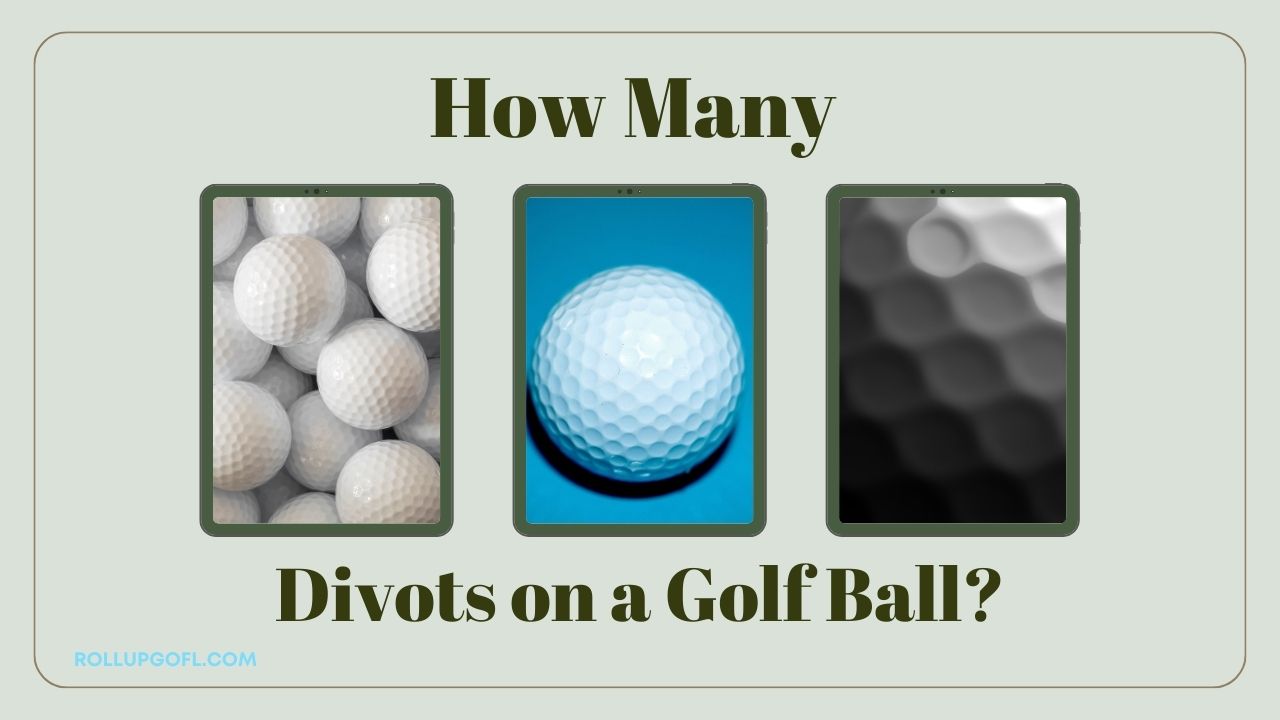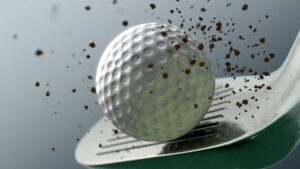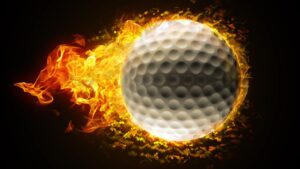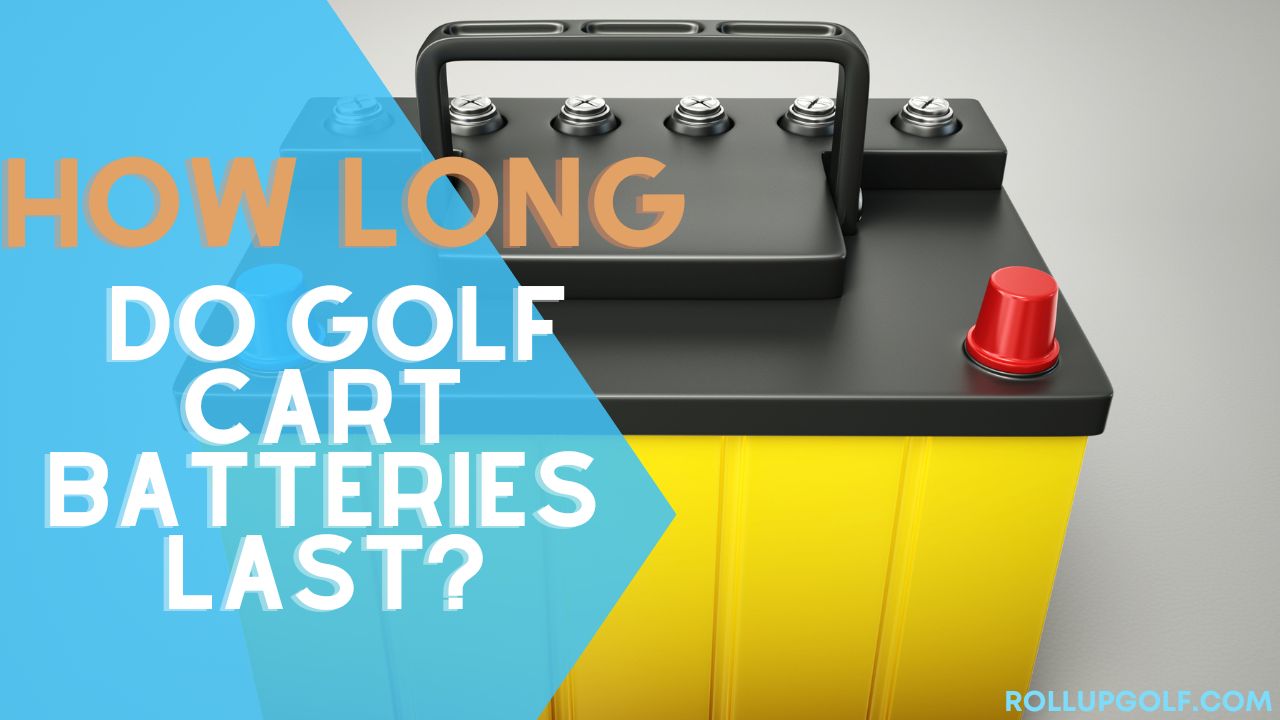
Golf is a sport rich in tradition, strategy, and technicality. Every aspect of the game, from the clubs to the course conditions, plays a significant role in a player’s performance. One crucial component, often a source of curiosity has you ever wondered ‘How Many Divots are on a Golf Ball‘? – those are marks left on the course! is the golf ball. This seemingly simple sphere is a marvel of engineering, with intricate design features that affect its flight and trajectory. Among these features, dimples hold a special place, contributing to the aerodynamics and overall performance of the ball.
we’ll explore:
- How Many Divots on a Golf Ball?
- why are there dimples on a golf ball?
- How many dimples on a Titleist golf ball
- Are more dimples on a golf ball better
What are Divots on a Golf Ball?
Divots, also known as indentations or dimples, are small depressions found on the surface of a golf ball. These features are not random; instead, they are intentionally designed and strategically placed during the manufacturing process. Divots serve a crucial role in optimizing the aerodynamic properties of the ball, influencing its flight characteristics and overall performance.
History of Golf Ball Design
The evolution of golf ball design has been a fascinating journey spanning centuries. From early wooden balls to modern, high-performance designs, manufacturers have continually sought ways to enhance the ball’s performance. The incorporation of divots into golf ball design is a relatively recent development, with early balls featuring smooth surfaces.
How Many Divots on a Golf Ball?

The number of dimples on a golf ball varies depending on the model and manufacturer, but there is a typical range. Most modern golf balls have somewhere between 300 and 500 dimples.
There have even been balls with way more than that! The record holder has a whopping 1,070 dimples. That’s a lot of dimples!
Read also: How Many Golf Balls Fit in a 5 Gallon Bucket?
How many dimples on a Titleist golf ball
The number of dimples on a Titleist golf ball depends on the specific model you’re looking at. Here are some examples:
- Titleist Pro V1 (recent models): 388 dimples
- Titleist Pro V1x (recent models): 348 dimples
It’s important to note that Titleist has changed the dimple pattern on their balls throughout the years, so older models may have a different number of dimples. You can find the exact number of dimples for a specific Titleist model by checking the manufacturer’s website or product information.
Are more dimples on a golf ball better

No, more dimples on a golf ball aren’t necessarily better. There’s a sweet spot between too few and too many. Here’s why:
- Dimples are good: They create a thin layer of air around the ball, reducing drag and allowing it to fly farther and straighter. They also help with lift, which keeps the ball airborne for longer.
- Too many dimples: Increase drag too much. This can shorten the distance the ball travels and make it fly lower.
The optimal number of dimples depends on the design and depth of the dimples themselves, not just the raw count.
In general, modern golf balls range from 300-500 dimples, which is a well-researched zone for maximizing performance.
Read also: What Do the Numbers on Golf Balls Mean?
why are there dimples on a golf ball?
Dimples on a golf ball aren’t just for show, they play a crucial role in how the ball flies through the air. Here’s the science behind them:
- Reduced Drag: Imagine a smooth golf ball sailing through the air. It would push against the air, creating drag that slows it down. Dimples disrupt this smooth airflow. As the ball spins, air sits in these dimples, creating a thin layer around the ball. This turbulent layer reduces drag, allowing the ball to travel farther.
- Lift Force: Dimples don’t just fight drag, they also help generate lift. The spinning ball and the dimpled surface work together to create a small amount of lift, similar to an airplane wing. This keeps the ball airborne for a longer time, maximizing its distance.
Overall, dimples are like tiny wings on a golf ball, helping it fly farther and straighter.
Manufacturing Process of Golf Balls
The creation of a golf ball is a meticulous process that involves various materials and techniques. During manufacturing, divots are formed by pressing or molding the surface of the ball, creating the signature dimpled texture. This process is carefully controlled to ensure consistency and optimal aerodynamic performance.
Regulations and Standards
Governing bodies such as the United States Golf Association (USGA) and the R&A have established strict regulations regarding the design and construction of golf balls. These standards include specifications for the size, weight, and configuration of divots, ensuring fair and consistent play across all levels of the game.
Read also: What Golf Ball Should I Use?
Purpose of Divots

The purpose of divots on a golf ball is multifaceted and crucial to the ball’s performance on the course. These small indentations, strategically placed across the surface of the ball, serve several key functions:
Aerodynamics Optimization
Divots play a vital role in shaping the aerodynamic properties of the golf ball. When the ball is in flight, the airflow around it is disrupted by the presence of divots, creating a thin layer of turbulent air known as the boundary layer. This turbulence reduces drag, allowing the ball to travel farther and with greater stability.
Reduced Drag
By creating turbulent airflow, divots help minimize the drag force acting on the golf ball as it moves through the air. Reduced drag means less resistance, enabling the ball to maintain its speed and momentum over longer distances. This is particularly advantageous for achieving maximum distance off the tee or during long approach shots.
Enhanced Lift
Divots also contribute to the generation of lift, which is the upward force that keeps the ball airborne. The turbulent airflow created by divots helps to separate the airflow over and under the ball, generating a pressure differential that produces lift. This lift allows the ball to stay airborne for a longer duration, resulting in a higher trajectory and better overall control.
Improved Stability
The presence of divots on a golf ball helps to stabilize its flight path, especially in windy conditions or during high-speed swings. The turbulent airflow created by divots interacts with the smooth airflow over the ball, reducing the effects of side winds and other external factors that can cause the ball to veer off course. As a result, golfers can achieve greater accuracy and consistency in their shots.
Spin Control
Divots also play a role in controlling the spin of the golf ball, particularly in the case of wedge shots and approach shots around the green. The interaction between the ball’s dimpled surface and the clubface at impact can impart backspin or sidespin, influencing how the ball reacts upon landing. Skilled golfers can use divots to manipulate spin and control the ball’s trajectory, allowing for more precise shot-making.
Impact on Golf Performance
The presence of divots on a golf ball can have a significant impact on a player’s performance. By enhancing aerodynamic efficiency, divots can lead to longer drives, more consistent ball flight, and improved overall control. Players often choose golf balls with specific divot patterns to suit their playing style and course conditions.
Number of Divots on a Golf Ball
A typical modern golf ball features hundreds of divots arranged in a uniform pattern across its surface. The exact number of divots can vary depending on the manufacturer and the specific design of the ball. However, most balls feature between 300 and 500 dimples, with each divot contributing to the ball’s aerodynamic performance.
Role of Dimples
Dimples and divots are closely related, with dimples referring to the small depressions on the surface of the ball that create divots. The presence of dimples is essential for optimizing aerodynamic performance, as they help to create turbulent airflow around the ball, reducing drag and increasing lift.
Effect of Divot Pattern
The pattern and arrangement of divots on a golf ball can have a significant impact on its performance. Different patterns may affect the ball’s spin, trajectory, and stability in flight. Manufacturers often conduct extensive research and testing to determine the optimal divot pattern for each type of ball.
Divot Placement
Divots are strategically placed on the surface of the golf ball to maximize their aerodynamic benefits. Manufacturers carefully consider factors such as symmetry, depth, and spacing when designing divot patterns. This attention to detail ensures consistent performance across a range of swing speeds and playing conditions.
Materials Used for Divots
The materials used for divots on golf balls vary depending on the manufacturer and the desired performance characteristics. Common materials include synthetic polymers, urethane, and other resilient plastics. These materials are chosen for their durability, flexibility, and ability to maintain consistent aerodynamic properties.
Research and Development
The golf industry is continually evolving, with manufacturers investing heavily in research and development to push the boundaries of performance and innovation. Ongoing advancements in materials science, aerodynamics, and manufacturing techniques are driving the development of new golf ball designs with enhanced divot patterns and aerodynamic features.
Common Myths About Divots

Despite their importance in golf ball design and performance, divots on golf balls are often surrounded by myths and misconceptions. Let’s debunk some of the common myths about divots:
More Divots Mean Better Performance
One prevalent myth is that a higher number of divots on a golf ball equates to better performance. In reality, the optimal number and arrangement of divots are carefully engineered by manufacturers to maximize aerodynamic efficiency. Simply increasing the number of divots without considering other factors can hinder performance by creating excessive drag and turbulence.
Specific Divot Patterns Guarantee Success
Some golfers believe that certain divot patterns, such as hexagonal or square arrangements, guarantee better performance on the course. While divot patterns do play a role in aerodynamics, there is no one-size-fits-all solution. The effectiveness of a divot pattern depends on various factors, including swing speed, clubhead design, and environmental conditions.
Divots Can Be Repaired
Contrary to popular belief, divots on golf balls cannot be repaired. Once a divot is formed during the manufacturing process, it becomes a permanent feature of the ball’s surface. While golfers can repair divots on the turf to maintain course conditions, the dimples on a golf ball cannot be fixed once they are damaged.
Divots Only Affect Distance
While divots certainly play a significant role in maximizing distance by reducing drag and optimizing lift, their impact extends beyond just lengthening shots. Divots also contribute to the ball’s stability, spin control, and overall flight characteristics, influencing both distance and accuracy on the golf course.
All Divots Are Created Equal
Not all divots are created equal, and their effects on ball performance can vary depending on factors such as depth, size, and placement. Manufacturers carefully engineer divot patterns to achieve specific aerodynamic properties tailored to different types of golfers and playing conditions. A slight variation in divot design can have a noticeable impact on ball flight and performance.
Choosing the Right Golf Ball
Selecting the right golf ball is a crucial decision for any player looking to optimize their performance on the course. Factors such as swing speed, playing style, and course conditions should all be considered when choosing a ball with the appropriate divot pattern and aerodynamic properties.
Maintenance and Care
Proper maintenance and care are essential for preserving the performance of golf balls, including their divots. Storing balls in a cool, dry place and avoiding exposure to extreme temperatures or moisture can help prevent damage to the surface and maintain optimal aerodynamic performance.
Innovations in Golf Ball Design
The future of golf ball design holds exciting possibilities, with manufacturers exploring new materials, technologies, and construction techniques. From advanced aerodynamics to customizable divot patterns, the next generation of golf balls promises to deliver even greater performance and precision on the course.
Environmental Impact
As the golf industry continues to innovate, there is growing awareness of the environmental impact of golf ball production and disposal. Manufacturers are increasingly focusing on sustainability, exploring eco-friendlyalternatives and biodegradable materials for golf ball construction. By reducing the environmental footprint of golf balls, manufacturers can help preserve natural habitats and ensure the long-term sustainability of the sport.
Conclusion
In conclusion, divots play a crucial role in the performance and aerodynamics of golf balls. These small indentations are strategically placed on the surface of the ball to optimize lift, reduce drag, and enhance overall stability in flight. Understanding the purpose and impact of divots can help players make informed decisions when selecting golf balls and improve their performance on the course.
FAQs
1. How many divots are typically found on a golf ball?
- Most modern golf balls feature between 300 and 500 divots arranged in a uniform pattern across the surface.
2. Do different divot patterns affect golf ball performance?
- Yes, different divot patterns can have varying effects on spin, trajectory, and stability in flight, influencing overall performance.
3. Are golf ball divots and dimples the same thing?
- Yes, divots and dimples refer to the small depressions on the surface of a golf ball that contribute to its aerodynamic properties.
4. Can golf ball divots be repaired?
- No, golf ball divots are permanent features that cannot be repaired. Proper maintenance and care can help preserve their performance over time.
5. Are there regulations regarding the design of golf ball divots?
- Yes, governing bodies such as the USGA and the R&A have established strict regulations regarding the size, configuration, and placement of divots on golf balls to ensure fair play and consistent performance.








